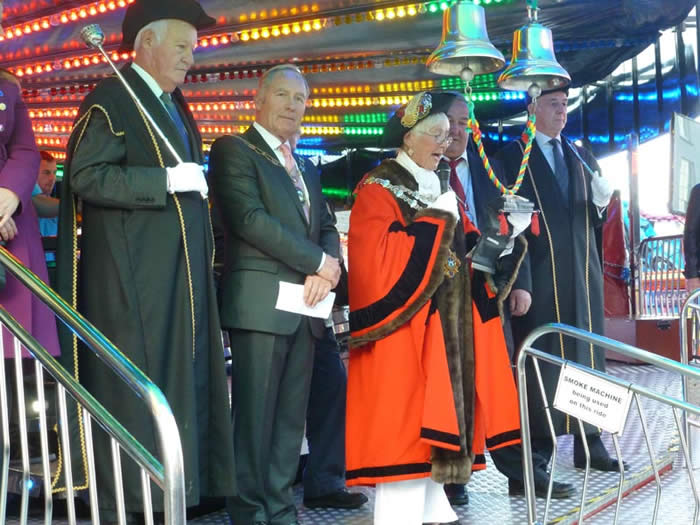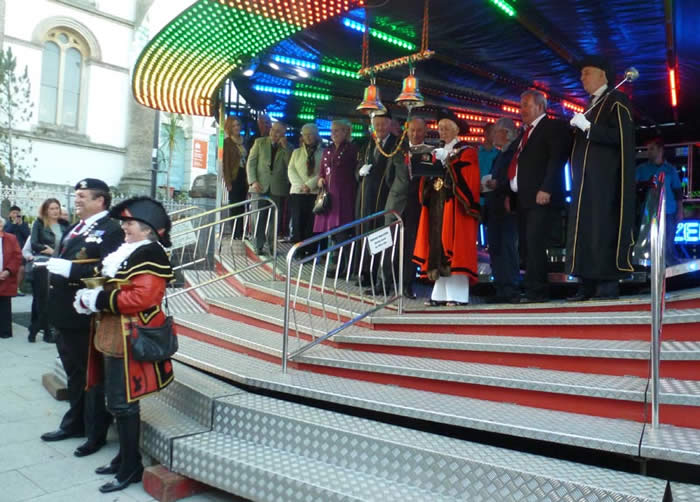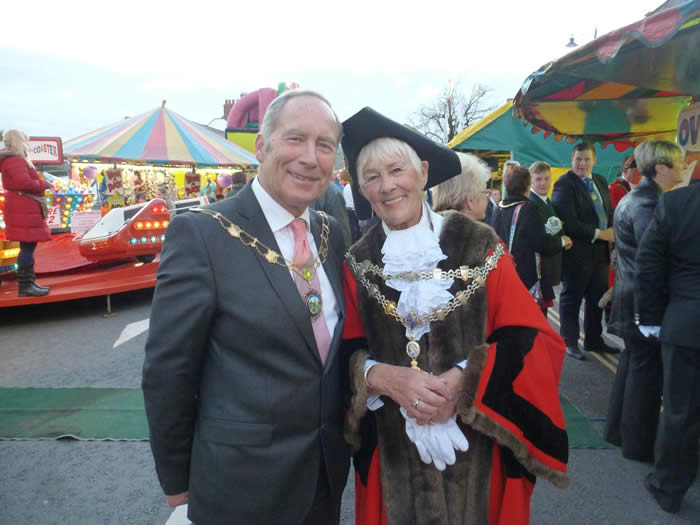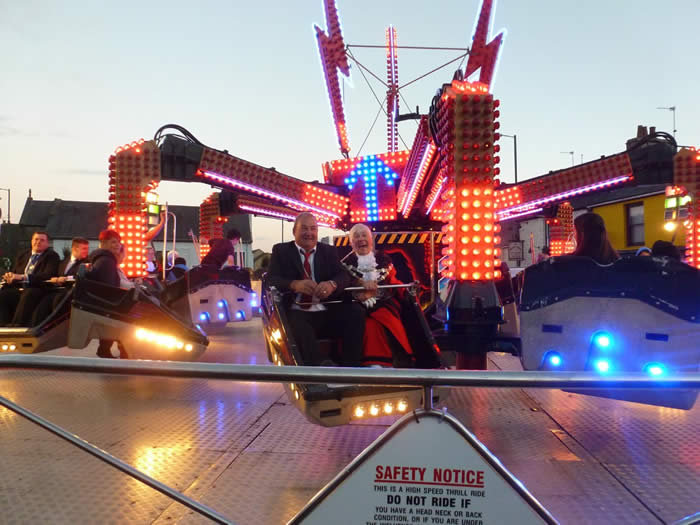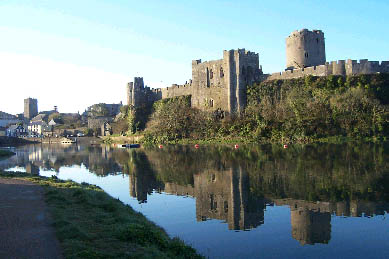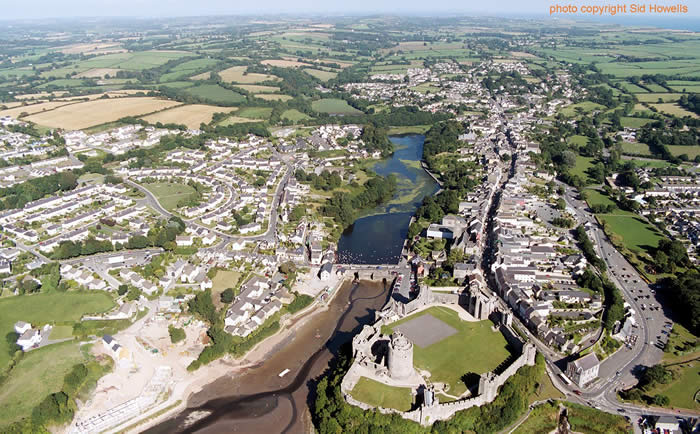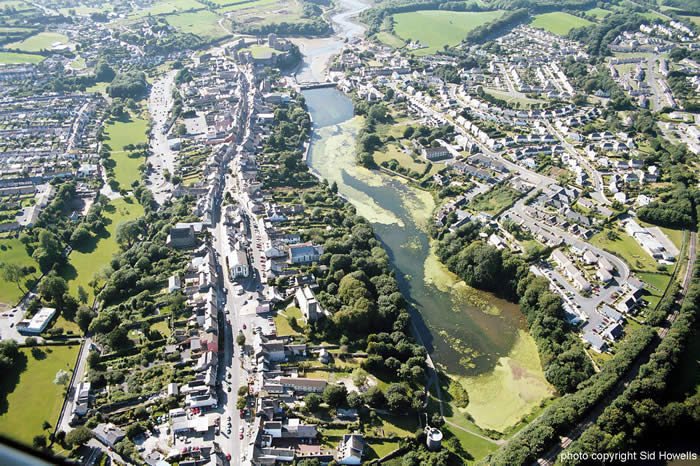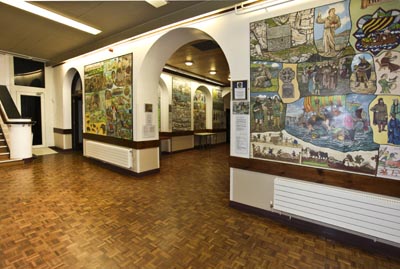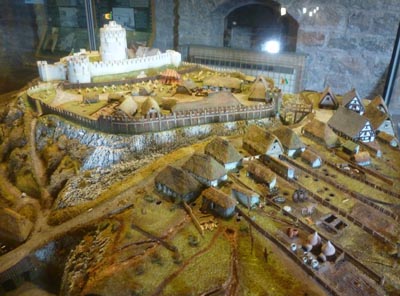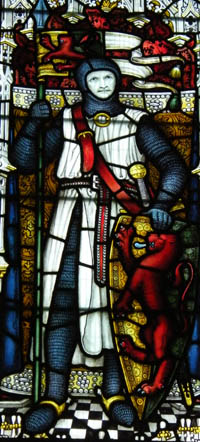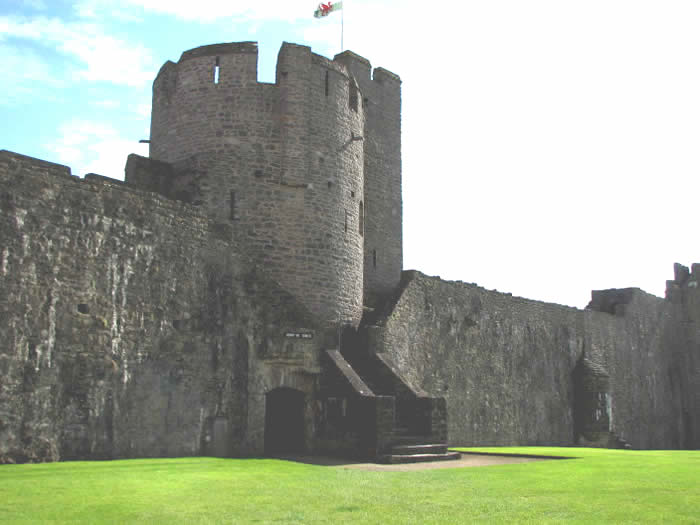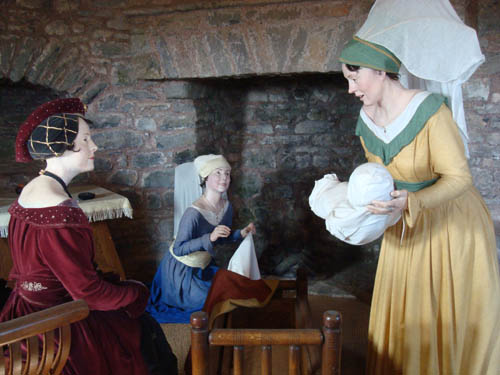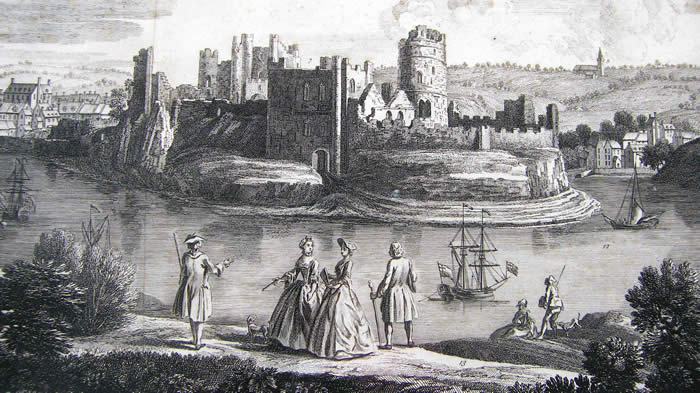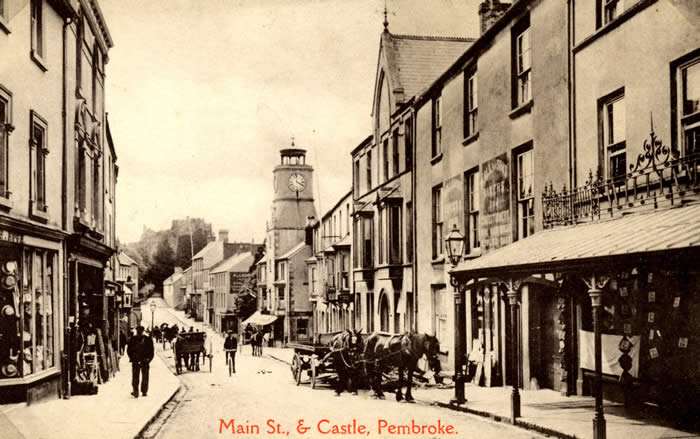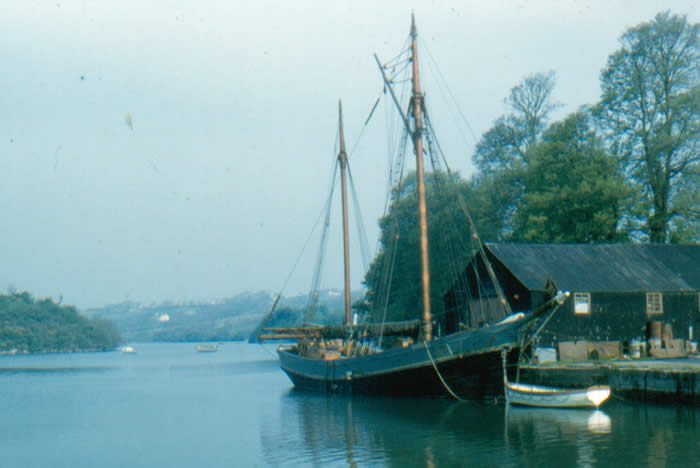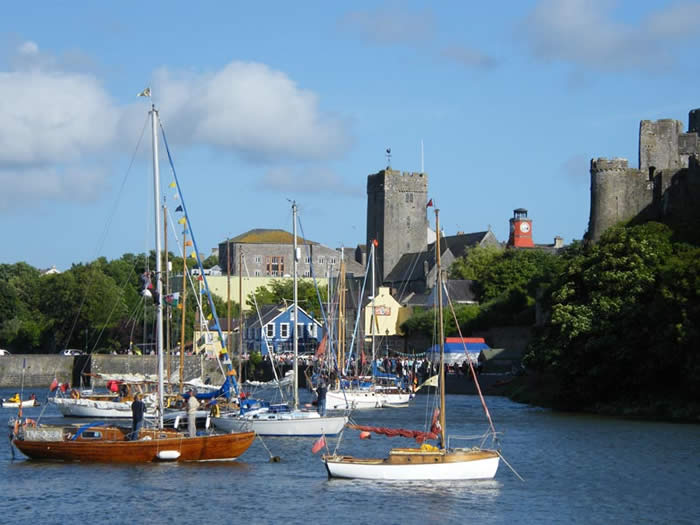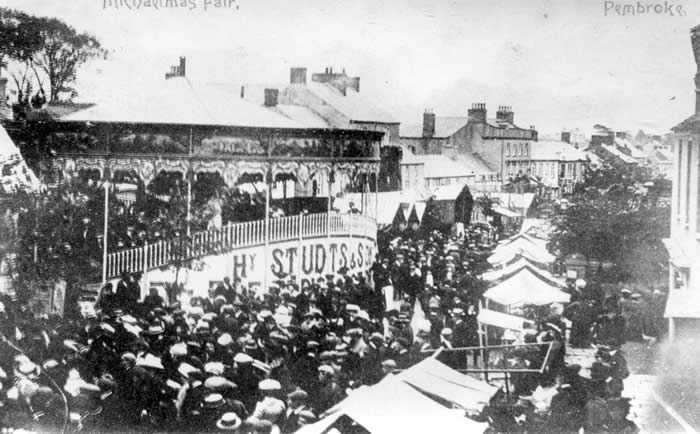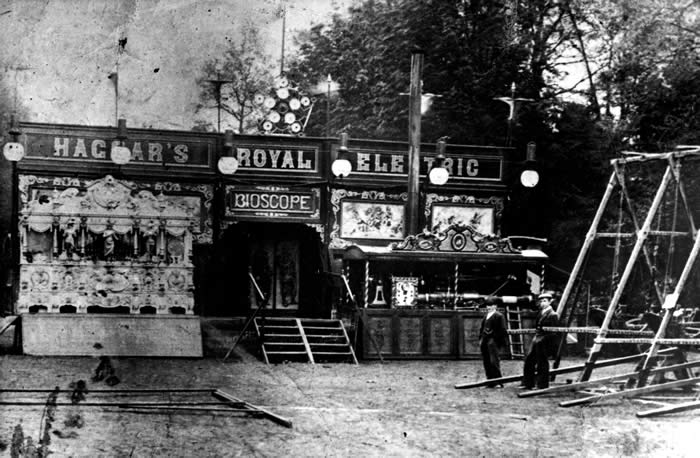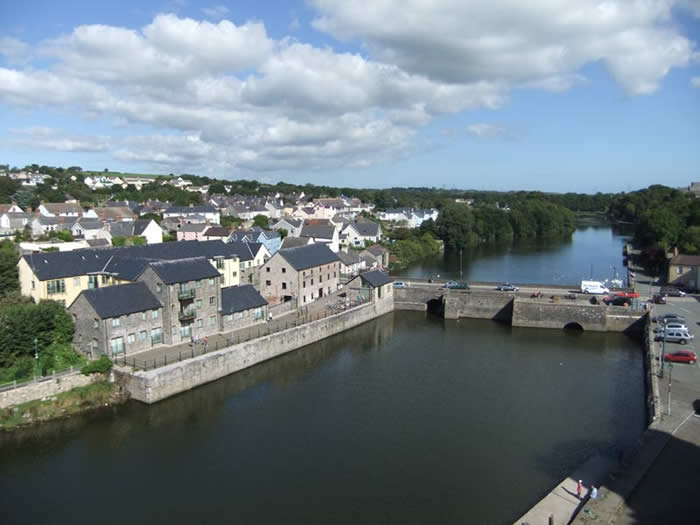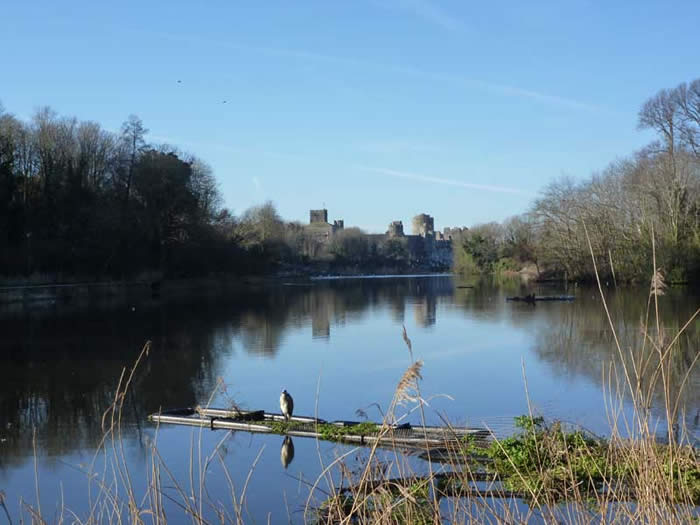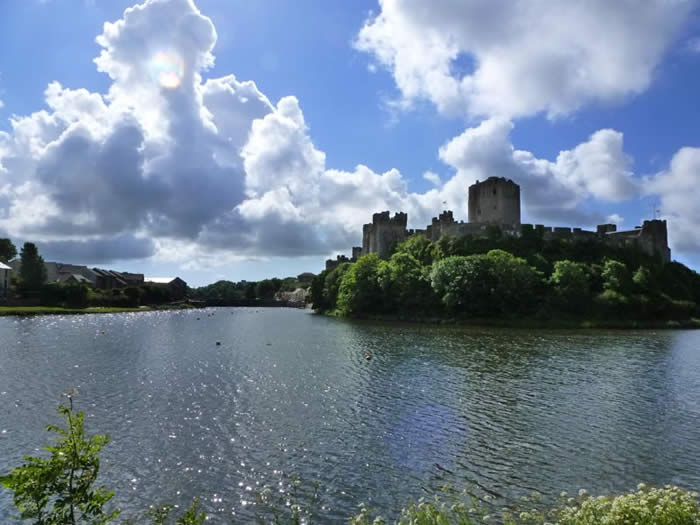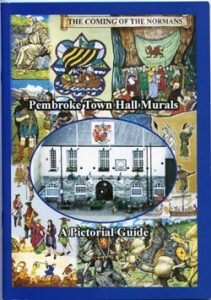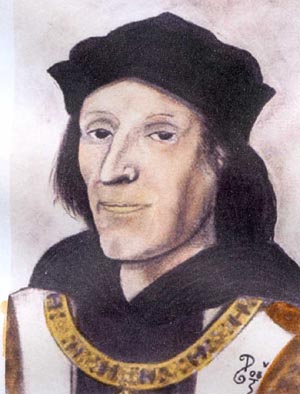
| HOME | ABOUT | PEMBROKE | MONKTON | PROJECTS | HISTORY | MUSEUM | LANDSCAPE | GALLERIES | PUBLICATIONS | CONTACTS |
HISTORIC PEMBROKEOYEZ! OYEZ! OYEZ! THE OPENING OF PEMBROKE FAIR
Pembroke is very proud of its traditions - one of the highlights of its calendar is the opening of the Michaelmas Fair on the second Thursday of October. It is a real link with the past as its origins lie in Pembroke's medieval charters which granted to the people of Pembroke the right to hold markets and fairs. The annual Michaelmas Fair was formerly a hiring fair when farm workers from the area would come to seek employment. It also attracted traders and entertainers, prominent names being Haggar, Studt and Danter. Although it is now entirely a fun fair it still takes place in Pembroke Main Street and is opened with great ceremony by the Town Crier (Cllr Rose Blackburn) and Mayor (Cllr Pauline Waters) who are pictured here.
ABOUT PEMBROKE
The town of Pembroke is of national importance for both its heritage and its unique environment. The historic core of Pembroke is constructed on a low, east-west aligned, limestone ridge, to the north and west of which lies the tidal (but now dammed) Pembroke River and to the south an area of marshy land (now reclaimed and under car parks) called the Commons. The Castle dominates the town: it was the birthplace of Henry VII the founder of the Tudor Dynasty. The remains of the present walls constructed in the early 14th century still encircle the historic core of the town which essentially comprises the long main street flanked by shops, businesses and houses constructed in burgage plots. Of Pembroke J.R.Cobb commented: "In plan it is ridiculously like a skeleton of an ill conditioned flounder, the Castle precinct being the head, the donjon the eye, the great south curtain its gills, the only street representing the vertebral one and the various gardens its rays," Although since WWII Pembroke has expanded greatly, that structure can still be seen in the aerial photographs below.
Thanks to Sid Howells for allowing us to picture his aerial views of Pembroke - looking 1.East and 2.West
PEMBROKE: A SENSE OF PLACE The Society has produced a leaflet: Pembroke: a sense of place. We have also produced a Monkton leaflet and the two should be looked at side by side. Space is at a premium in a leaflet so we are developing the Story of Pembroke pages on this website. Written by Linda Asman and Terry John, they give a much fuller picture of Pembroke's prestigious past. More recently we have published 'Through My Eyes: a community history of Pembroke and Monkton' which for the first time gives Pembroke a history from earliest times to the present day. It has all been done in a unique way through the stories of 45 Pembroke people and published not only as a printed book but as a DVD to play on your television. Go to our Publications Page for more details. Meanwhile, here is a taste of what Pembroke once was, its origins and historic development. Historical Background Located at the head of the Pembroke River, on a narrow limestone ridge, Pembroke occupies a commanding position. Pembroke “Penfro” was almost certainly well known to the Normans as the head or principal (pen) region (bro) of the area.
Follow Pembroke's Story by visiting the wonderful Pembroke Murals in Pembroke Town Hall and the Museum in the old Courtroom Recorded history began with the Normans but Pembroke’s origins can be traced back 10,000 years to the Mesolithic hunter gatherers who occupied Wogan's Cavern situated beneath the Castle. The existing castle would almost certainly have been the site of a fortified settlement during the Iron Age but the later building of Pembroke Castle would have obliterated all evidence. In 1093 a force of Normans under Arnulf de Montgomery overcame local resistance to build a wooden fortification here. Pembroke's strategically advantageous location enabled the Normans to hold firm against Welsh retaliation and Pembroke Castle, under the command of Gerald de Windsor, became a Norman powerbase from which the invaders were to extend their influence over the whole of South Pembrokeshire. Gerald also won the hand in marriage of the legendary Welsh Princess Nest ‘the Helen of Wales’. To defend this newly gained territory, Henry I established a colony of English and Flemish settlers to displace the native Welsh. Hence the name “Little England beyond Wales”. The Earldom of Pembroke was created in 1138 The first Earl, Gilbert de Clare was granted palatinate powers to further strengthen Pembroke against Welsh attack. He was succeeded by his son Earl Richard Strongbow, the man who led the conquest of Ireland in 1169. The invasion was launched from Pembroke where, in the autumn of 1171, Henry II ordered the 400 strong English fleet to assemble in the Haven, the largest ever gathering of warships there.
Strongbow’s daughter and heiress Isabel was married to the great William Marshal, who became Earl of Pembroke in 1189. During this time Pembroke Castle took its present structure built in stone, with its Norman Hall and distinctive, cylindrical Great Keep or Donjon. Pembroke town grew and prospered in the shadow of the castle. The historic core of the town was established then, of a long main street flanked by shops, businesses and houses constructed in burgage plots, protected on three sides by water and surrounded by walls. The second charter by Henry II confirmed Pembroke’s privileged status: all merchant ships were required to report to the customs house in Pembroke making it the centre of trade for the whole of the Milford Haven Waterway. During the Wars of the Roses, town & castle wavered in support of warring Lancastrian & Yorkist factions. In 1447 Jasper Tudor (half brother to Henry IV) was appointed Earl of Pembroke and into his care was sent the young Margaret Beaufort who gave birth to a son in Pembroke Castle, a son destined to become Henry VII and founder of the Tudor dynasty. His son Henry VIII succeeded as Earl of Pembroke and bestowed the title of Lady Marquess to his wife Anne Boleyn in 1532. It was during this reign that Pembroke’s fortunes fell: the Act of Union 1536 took away Pembroke’s Palatine status and brought to an end the Earldom. The Second Act of Union 1543 gave Haverfordwest county status & effectively became the county town. The title of Earl of Pembroke became a title in name only. Monkton Priory too fell victim to the English Reformation and the Dissolution of the Monasteries. These were times of decline.
However, Pembroke rose to national notice again in the following century. John Poyer, a staunch parliamentarian, became mayor in 1641 and in 1642 all of Wales declared for the king apart from Pembroke & Tenby. Unfortunately, Poyer later changed sides and, in what was to become the Second civil war in 1648, subjected Pembroke to a lengthy siege which was conducted by Cromwell himself. Poyer surrendered and was executed, while much of the castle and walls of Pembroke were demolished. These were bad times indeed but it would appear that Pembroke saw a revival of its fortunes in the 18th Century when Daniel Defoe described it as the richest and most flourishing town in South Wales. Pembroke was now the major port on Milford Haven and trade was booming. Many of the houses in the Main Street date from this time, built in the eighteenth and early nineteenth centuries in a simple Georgian style. Many were rebuilt on mediaeval sites and still incorporate the earlier fabric including undercrofts. The nineteenth century saw a downturn in Pembroke's importance as a port losing out to the new town of Milford and Haverfordwest. However, the building of the Royal Dockyard a short distance away gave Pembroke a boost. Many found employment in the new shipbuilding industry in the Dockyard and Pembroke itself grew alongside the building of the new town of Pembroke Dock with suburbs at Orange Gardens and Monkton. Both towns were combined into one borough. Increased prosperity and advances in engineering led to a water supply for Pembroke and a Gasworks. An important agricultural centre and market town, many businesses flourished along its Main Street.
Visit our Story of Pembroke pages to find out more
Coastal Trade From the beginning, the sea was Pembroke's life blood. It grew prosperous through its sea trade but this was to decline in the nineteenth century. The Pembroke River was not easily navigable and when the Pembroke and Tenby Railway opened in 1866 trains provided a far easier way of transporting raw materials. However, the Coastal Trade continued and sailing ships could be seen trading at the Pembroke Quays well into the 20th century. The last to do so was the Kathleen and May in 1960. There is little reminder of these once bustling quays: Only the Royal George Inn and the boathouse remain of the buildings on the South Quay. The Mill Bridge was a former tidal barrage which was built in the Middle Ages to power the town's corn mill, originally granted to the Knights Templar in 1199. A large 5 storey Victorian mill later stood here but this burnt down in 1956.The renovated Corn Store is the sole survivor of the buildings of the North Quay, now surrounded by modern flats. A modern barrage was built in the 1970s to dam the Castle Pond - this means that boats are now a rare sight at the South Quay.
Agriculture and Fairs Pembroke was an important agricultural centre and market town: the right to hold markets and fairs was embodied in its Royal Charters dating back to the Middle Ages. Although Pembroke's days as a market town have passed, those rights still survive in the Michaelmas fair held in the Main Street every October. Now a pleasure fair, its origins lie in agriculture and trade. It was the annual hiring fair where bargains were struck with the local farmers for a year's work and attracted farm workers from all over South Pembrokeshire. It also attracted traders and entertainers, Haggar's bioscope being a main attraction. William Haggar was one of the pioneers of the cinema: the demise of Haggar's cinema in Pembroke is much regretted.
Pembroke Millponds Pembroke abounds in natural history too. From the South Quay take a walk along the Main Millpond to see large numbers of swans, wildfowl, waders and seabirds. Bats fly here at dusk and otters are a rare sight. Before WW2 the North side was fields ‘The Green’: now housing estates can be seen covering the whole area. Of historic interest is ‘Riverside’, formerly the Pembroke Union Workhouse, and Golden Farm, where once Golden Prison stood. The romantic tale of the escape of prisoners from the 1797 French invasion aided by local girls is part of Pembroke legend. The walk takes you along the South side of the Town walls ending at Barnard’s Tower and the Railway embankment beyond which is the now inaccessible Upper Pond.
Tourist Town In 1972 Pembroke was designated a Conservation Area in recognition of its national historic importance and architectural merit. Now, Pembroke relies largely on tourism, with its castle one of the finest in the country. At one time painters like Turner and Sandby came here to paint the picturesque ruins and surroundings: since then Castle has largely been restored thanks to the antiquarian J R Cobb and Sir Ivor Philipps. Now managed by a Trust, it is Pembroke’s great asset, a leading tourist destination and venue for events.
|
|||||||||||||||||||||||||||
P
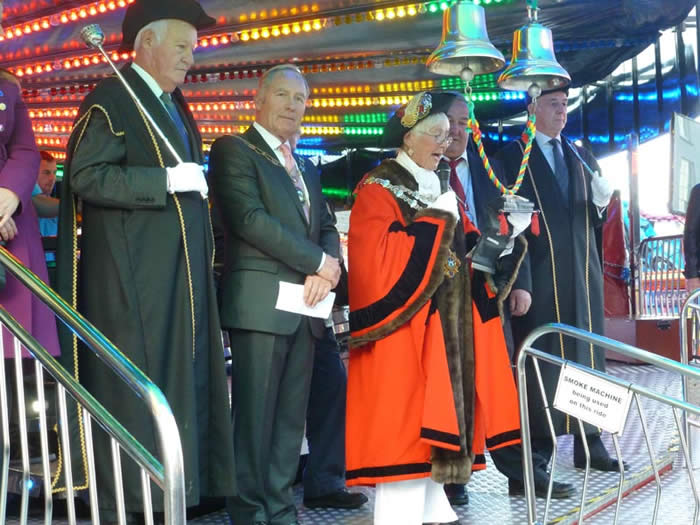 |
The Cry of the Fair CLICK TO SEE VIDEO |
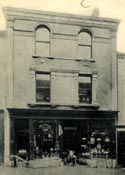 |
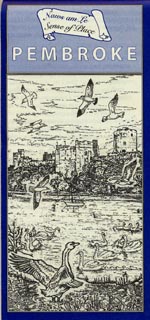 |
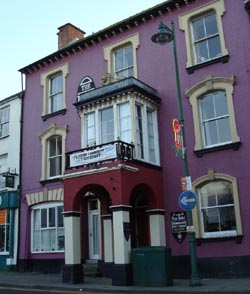 |
| Archaeological Survey |
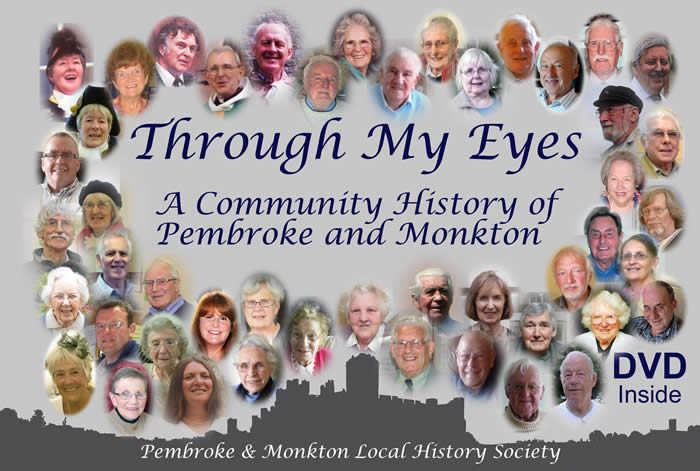 |
 |
